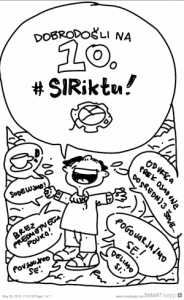Emica Škrinjar, OŠ Selnica ob Dravi
Students often use information and communication technology, play digital games and spend a lot of time on social media. They are used to cooperate in activities in which they are awarded for their commitment and work. To provide learning results teachers have started using the modern media environment and technology of computer games. Therefore I have decided to change a traditional way of teaching too. A student, who learns by himself, needs a teacher to guide him. I have chosen learning with a digital game called Pre-Civilization. I have taken into consideration the advantages of digital games, I was guided by a constructivist approach to learning which gives priorities to practical learning. Students can observe their classmates and improve certain skills. Constructivist theories teach that individuals learn through interaction with their environment and peers. This demands a series of attempts and failures as well as a students ability to understand his past and present experiences to complete his own knowledge. With the digital game students achieve the following aims of the history syllabus for grade 7: – describe the main characteristics of a modern thinking man (homo sapiens), – explain how the changes in the environment influenced on human development, – describe the changes in ways of life in certain periods of prehistoric times and explain why they happened, – explain the meaning of accumulation of experiences and knowledge for improving life circumstances, – come to a conclusion about major cultural achievements of prehistoric humans. Performance scenario 2 lessons are planned. Students get familiar with the rules of the game. I explain they will have to stop at some parts of the game to have a discussion about important things, to cooperate with classmates, look for information how to continue and finish the game (discussions are planned on each key point to connect events in the game with learning results, it is important to connect skills gained through the game with the syllabus). I use questions prepared for formative assessment. An additional didactic value is a digital clock which is age-appropriate, it considers criteria for didactic games, and uses a simple curve of learning. Student who do not play digital games, get some experiences with the help of classmates. In my opinion this approach to learning cannot prevail, it is recommended to be introduced at least once a year in each class. It is nessessary to move to modern practice in order to follow our students and their typical characteristics as a digital generation.
